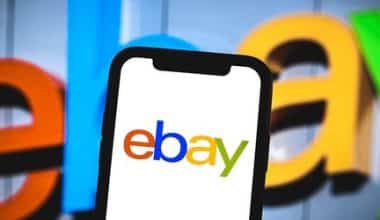A call to action (CTA) is a marketing word for a layout that is meant to elicit an instantaneous reaction or urge an instantaneous purchase. Common examples of CTA are phrases or sentences placed in marketing materials or on a website to encourage visitors to take some sort of desired action. However, changes in society necessitate new kinds of calls to action. It’s not about trying to get customers to change their habits to fit a firm’s needs, but rather about adapting the business to the customers’ preferences. To ensure that their CTA is contextually appropriate, marketers must stay abreast of current events and their target market’s reactions to those events. In addition, marketers need to adapt their CTA messaging and make connections with consumers when their interests change. We’ll also briefly explain how marketing CTA differs from a CTA scan and test.
What Is a CTA in Marketing
In the field of marketing, a call to action, or CTA, is an instruction given to the audience with the intention of eliciting an immediate response. These instructions typically make use of an imperative verb, such as “call now,” “find out more,” or “visit a store today.”
An offer that is only available for a limited time (such as ‘Offer must expire soon’; ‘Limited stocks available’) or a special deal that is typically accompanied by a time constraint (such as ‘Order before midnight to receive a gift with your order’; ‘Two for the price of one for the first 50 callers only’) are examples of other types of calls to action that may provide customers with compelling reasons to make an immediate purchase.
Basically, the secret to a strong call to action is to give customers strong incentives to make purchases right away rather than put off making them. A CTA might be a straightforward, non-obligatory request like “choose a color” or “view this video,” or it can be far more demanding. A clear CTA would be a request for the customer to make a purchase or submit personal and contact information.
A CTA generally appears as a digital graphic that motivates a lead to proceed with a purchase. Consumers who shop online are already familiar with CTAs like “Click here,” “Download Now,” and “Learn More.”
How to Write a Compelling CTA in Marketing
A call to action (CTA) is a statement in marketing and advertising that elicit an immediate response from the intended audience or motivates them to take some sort of action. Aligning the CTA with the product, using action verbs, creating a sense of urgency, and keeping it clear, succinct, and catchy are all ways to improve its effectiveness.
It’s crucial to make sure your call-to-action (CTA) fits in with the value proposition of your product or service. You can accomplish this by tailoring the CTA to the content of the page, ad, or social media post to which you’re attaching it to. The CTA will be more effective and interesting if you make use of action verbs. You should also incorporate action verbs like “call,” “shop,” “apply,” “become,” and “get” for the CTA to be more effective.
You can also increase the CTA’s effectiveness by instilling a sense of urgency in the reader. Expressing urgency through the use of “now,” “here,” and “quickly” is one way to do this. Changing the call to action from “Hire Marketers” to “Hire Marketers Today!” emphasizes the time-sensitive nature of the offer while still conveying the original message.
An effective call to action (CTA) combines clarity, concision, and memorability. A compelling call to action (CTA) is one that gets to the point quickly and is easy to remember because of its clarity, concision, and catchiness. The call-to-action (“Hire Marketers”) is simple, direct, and memorable.
What Is the Difference Between a CT and a CTA?
A computed tomography (CT) scan is a form of x-ray imaging that involves the use of a computer to acquire images of your body in cross-sectional form. A computed tomography angiogram (CTA) on the other hand, involves combining a CT scan with a unique dye or contrast material in order to provide images of the blood arteries and tissues in a particular area of your body.
What Is a CTA Procedure?
A CT angiography is a type of medical test that produces images of blood arteries and tissues in a specific region of your body by combining a CT scan with the injection of a unique dye. This type of test is performed on a patient. They will insert an intravenous (IV) line in your arm or hand while infusing the dye into your veins through the IV.
What Is a CTA on a Website
On a website, a call to action (CTA) is a directive that encourages the visitor to do some sort of action. Simple instructions like “contact us now,” “find out more,” or “subscribe to our Newsletter” might serve as a call to action.
Generally, the last thing you want is for people to visit your site to learn about your offerings and then bounce without buying anything. Calls to action are an easy and effective approach to increase conversions and revenues by preventing visitors from just reading and clicking away from your site.
Using a CTA on your website that is clear and succinct can help your company in many ways, such as;
#1. Encourage visitors to Interact More Thoroughly
With the use of calls to action (CTAs), you can encourage site visitors to take action beyond simply reading an article and then leaving your site. For instance, if you add a call-to-action like “Follow us on Facebook” at the end of a blog post, you’re more likely to attract new followers. Moreover, gaining more Facebook likes will help you interact with customers and potential leads, expanding your brand’s reach.
#2. Increasing Conversion Rates
Basically, an organization’s conversion rate is a key performance indicator. There are specific calls to action that are meant to transform site visitors into potential customers. You can include a call to action (CTA) on a landing page to have visitors provide their contact information (name, phone number, and email address). It’s a great approach to collect data that you can use to connect with site visitors and also develop potential sales leads.
#3. Increase Your Email Subscriptions
For many companies, increasing their email list size is a primary marketing objective. Email marketing that works well helps organizations in a number of ways, including generating and nurturing leads, strengthening relationships with existing customers and clients, as well as attracting new customers.
Hence, with the correct calls to action (CTAs), a company may grow its contact list and email subscriber base. Hubspot for instance recommends keeping in touch with these individuals, so you can use your email list to keep in touch with them. Use “CTA” phrases and buttons in strategic locations on your website, blogs, and other content to get people to join your email list.
#4. Motivate Customers to Buy Your Goods or Services While They Still Have Them!
A successful Call to Action is one that instills a sense of urgency and compels the user to take immediate action in order to take advantage of a once-in-a-lifetime opportunity.
Place calls to action (CTAs) on your homepage, landing pages, blogs, social media posts, and other platforms where potential customers can see them if you are selling tickets to an event.
We’ve all seen calls to action (CTAs) like “Hurry! “Just five tickets left!” aims to generate a sense of urgency and encourage swift action.
#5. Urge Clients to Add Items to Their Shopping Cart
To convince visitors to purchase their products, e-commerce websites mainly rely on CTAs. Leaving items in shopping carts is one of the major problems that many online retailers deal with. Businesses may combat the problem of customers leaving their shopping carts empty before checking out and completing the purchase by using the appropriate CTAs.
CTAs that include “Add to Cart” or “Finish Purchase” aid businesses in reminding customers to do more than just add items to their shopping carts. And that they also need to finish the transaction.
Every company wants consumers to share their material online in addition to viewing and liking it. The more people get exposure to the brand online through user-generated content (such as blogs and social media posts), the larger the brand’s online audience will become.
You may get more people to share your material by including a “Share Now” button or text CTA at the end of each piece.
#7. Increase Your Product or Service Knowledge
Want people to find out more about your business and the services you provide? One easy way to get readers interested in learning more about a product, service, or issue is to include a “Learn More” CTA at the bottom of the website page or article.
What Is a CTA Test
A CT angiography is a type of medical test that produces images of blood arteries and tissues in a specific region of your body by combining a CT scan with the injection of a unique dye. This type of test is performed on a patient. They will insert an intravenous (IV) line in your arm or hand while infusing the dye into your veins through the IV.
Computed tomography (CTA) is a rapid, non-invasive examination that is used to examine the “coronary arteries,” or blood channels that supply the heart muscle. With the help of coronary CT angiography (CTA), your doctor can determine whether or not plaque has built up in the coronary arteries, which could lead to “blockages” that produce symptoms or raise your chance of having another heart attack in the future.
A CTA scan is a computerized version of traditional X-rays that produce cross-sectional images of the body. The dye that is infused into a patient in order to do CT angiography is referred to as a contrast material. This is basically because it “lights up” the blood arteries and tissues that they are analyzing.
What Does a CTA Test Show?
Coronary CT angiography (CTA) is a noninvasive procedure that detects coronary artery disease by using computed tomography X-rays. Coronary CTA offers detailed pictures of the blood arteries feeding the heart, making it possible to spot plaque-induced blockages or constriction.
What Are the Side Effects of CTA?
Itching, hives, vomiting, nausea (feeling unwell), sneezing, and dizziness are possible side effects. Though extremely uncommon, more severe reactions are possible; injury, bleeding, or infection at the injection site.
What Is the Difference Between a CTA and an Angiogram?
In comparison to traditional angiography, a CTA is a less intrusive test. In a typical angiogram, a catheter is inserted into an artery in your arm or leg and advanced to the location being examined. Albeit, there won’t be any insertion of tubes into your body during a CT angiography.
What Is a CTA Scan
The term “CT scan” is frequently employed when referring to computed tomography. A CT scan is a diagnostic imaging process that creates images of the internal structure of a body using a combination of X-rays and digital technologies. It will show in detail, any portion of the body, such as the bones, muscles, fat, organs, as well as blood arteries.
Compared to traditional X-rays, CT scans are more detailed. A beam of radiation is directed toward the bodily portion being investigated in normal X-rays. Once this energy beam passes via skin, bone, muscle, as well as other tissues, it varies whilst a plate behind the body portion will capture it. While a normal X-ray can provide a lot of information, one can not see inside organs and other structures in great detail.
The X-ray beam rotates in a circle around the body during a CT scan. This provides significantly more information and enables numerous views of the same organ or structure. The X-ray data is transmitted to a computer, which analyses it and shows it on a monitor in two dimensions. Three-dimensional graphics are now achievable thanks to modern technology and computer software.
One may carry out a CTA scan to assist in the diagnosis of cancers, to look into internal bleeding, or to look for several other inner injuries or perhaps damage. you can also perform a tissue or fluid biopsy using CT.
Conclusion
A call to action (CTA) is a statement in marketing and advertising to elicit an immediate response from the target audience or to motivate them to take some sort of action. Aligning the CTA with the product, using action verbs, creating a sense of urgency, and keeping it clear, succinct, and catchy in marketing are all ways to improve its effectiveness.
It is possible for a call to action to be either direct or indirect. Pathos reasoning is a powerful and indirect marketing strategy that you can use. When in use, it can help to encourage customers to form an emotional connection with the content you’re conveying. Even though the consumer isn’t currently interacting with a company through a purchase, establishing a positive emotional connection with a pathos call to action can increase the company’s brand awareness and possibly result in repeat business.
Related Articles
- Email List For Marketing: How To Build An Email List
- 10 Tips for Marketing Your SaaS Business Online
- What Is A Sales Funnel?: How to create a sales funnel(Stages, Examples, And Strategies)
- BANNER ADVERTISING: How It Works With Examples






